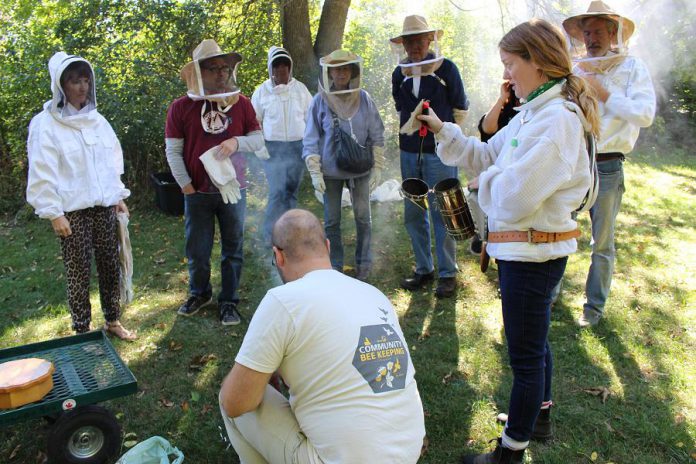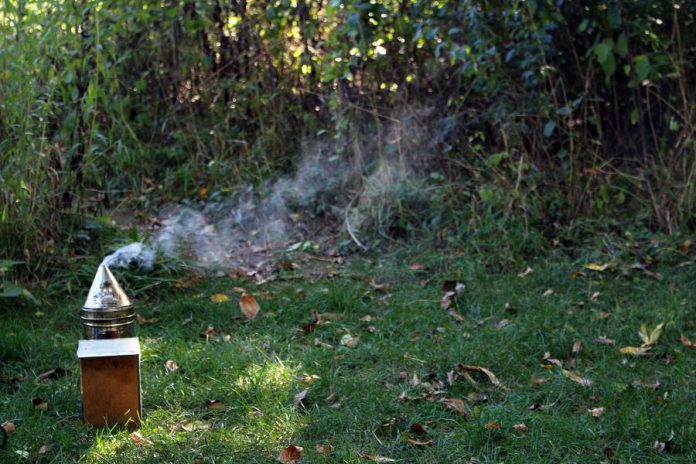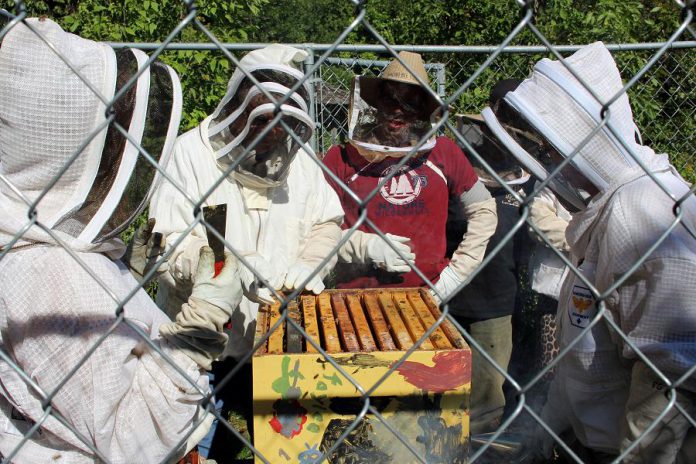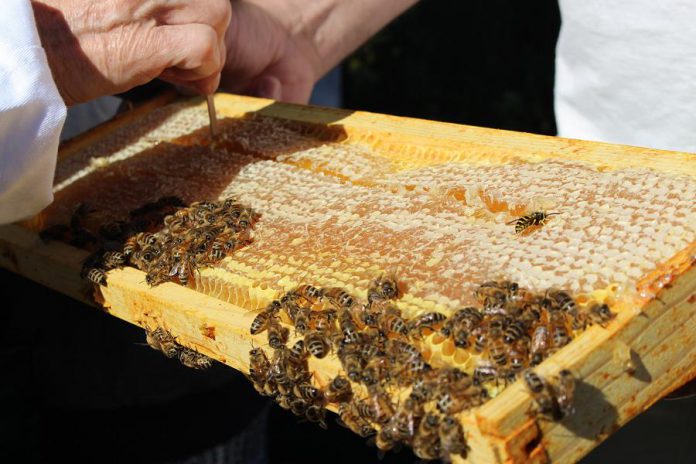
This coming weekend, on Saturday, September 9th, the GreenUP Community Beekeeping Program will host its final Open Hive! event of the season at GreenUP Ecology Park between 10 and 11 a.m.
Members of the public are invited to this drop-in event to experience a hands-on introduction to the world of honeybees. Participants will be able to put on protective beekeeping equipment including veils, hoods, and gloves, enter the hive enclosure, and open the hive alongside our host beekeepers.
The GreenUP Community Beekeeping Program promotes the awareness and appreciation of pollinators as a healthy part of our community through bee keeping education and advocacy. Understanding honeybee life cycles and ecology is an important step in learning to coexist with critical pollinators, particularly in urban areas where there has been as much as 60 percent loss of bee populations.
While honeybees, Apis mellifera, are not native to Ontario, they are bred for their docile nature and the volume of honey they produce. They are small, furry, and brown with black stripes on their abdomen. Honeybees are often confused with their cousins — bumblebees, wasps or hornets — and other species of native bees.
Honeybees have become important pollinator species in Ontario and their recent decline may have consequences for agriculture, ecosystem resiliency, and sustainability. Ontario proudly boasts 40 species of native bees, as well.
Bees are fascinating, ancient insects that are interesting to observe and to learn from. Participating in community environmental stewardship programs for critical pollinators allows Peterborough citizens to engage in conversations about bees and how we may co-exist with them in urban environments.
“The GreenUP Community Beekeeping Program promotes pollinator habitat in Peterborough and educates our community about the importance of bees to our food system and to local ecosystems,” explains GreenUP’s Resident Beekeeper Marcy Adzich, “This program also helps to build community through the stewardship of native bees and managed honeybees in Peterborough and our Open Hive! events allow our beekeepers to share their experiences with the public.”
What can you expect at an Open Hive! event?
Before entering the hive, beekeepers smoke the hive. Cedar shavings and burlap will be added to a hive smoker. A smoker is a stainless steel device with a long nose and built0in bellows used to create a smouldering fire that funnels smoke out the top so that it can be aimed at the hive.

The smoke triggers a similar response in the bees that they would feel in the presence of a forest fire. Smoking the hive creates a feeding response in the bees. They then fill their bellies with sweet honey in anticipation of a long flight after abandoning the hive due to fire. When a bee’s belly is full, it is difficult for them to engage the muscles necessary to sting, making it safer for the beekeepers to enter.
Once it is safe to enter, you will be welcome to join the Community Beekeepers in an experience close to the hive. You will see how the hive is set up and how the bee colony lives.
If you are lucky, you may see the queen bee. Did you know that the queen lays her body weight in eggs each day? The queen bee in any colony lays approximately 1,500 eggs each day for up to five years. There is only one queen in each hive and she is the mother of all the bees in the beehive.
The queen is tended to by attendant worker bees, who provide her with everything she needs including food and disposal of her waste; her only job is to reproduce. The queen bee lays eggs that become either female workers or male drones. She has the ability to control the sex of the eggs and will do so depending on the seasonal cycles, conditions in the hive, and the specific needs of the hive.

The GreenUP Ecology Park hive has been busy this year. You will likely see an abundance of honey. You may already know that the sweet thick liquid you enjoy on your breakfast toast or in your afternoon tea is the food bees make after foraging nectar from flowers. Did you know that nectar is converted to honey when the bee regurgitates the liquid and stores it in honeycombs inside the beehive? That’s right: honey is actually evaporated bee vomit.
Bees ingest and regurgitate the nectar many times until it is high enough in sugars to be stored as their food source. They continue to fan the honey in the honeycombs with their wings to continually evaporate more water from the liquid, which prevents fermentation. The bees then cap the cells with two layers of beeswax to seal them honey for consuming later.
The colour and taste of honey will differ depending on the source of nectar or the species of flowers in bloom. Each flower has its own unique nectar and flavour that is reflected in the taste of the honey. Last year, the GreenUP Community Beekeepers noted quite a difference in the honey that was made by bees in each of the hives across Peterborough.
GreenUP is currently stewarding six hives throughout Peterborough at five locations including at GreenUP Ecology Park, the Liftlock Community Garden, Lock 20 – Parks Canada, Greenwood United Church, and Holy Cross Secondary School.

“When tasting honey from the five hive locations in Peterborough, you can recognise subtle differences in the taste,” Adzich explains, “likely due to the vicinity of different nectar sources to the hive.”
Growing and blooming seasons will also determine the taste of honey. For example, clover honey is light in colour and mild in flavor, whereas buckwheat honey is quite dark and strong tasting. When honey is collected after corresponding growing seasons, different flavours and types of honey can be separated and packaged. In Ontario, many interesting honeys are available including blueberry, lavender, and goldenrod.
Honeybees are fascinating, ancient insects with advanced social behavior and with complex symbiotic relationships with pollinator plants, which have evolved together over time.
Join GreenUP for one last Open Hive! drop-in event on Saturday, September 9th from 10 to 11 a.m., or watch for the year-long beekeeping program which opens for registration each spring. To read more about the GreenUP Community Beekeeping Program, visit greenup.on.ca.



























